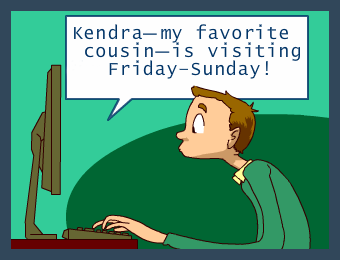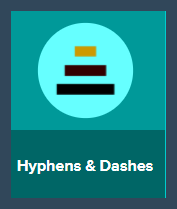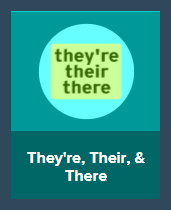Hyphenation and Spelling

A hyphen is
a line that combines words in your writing.
Language (11-12.2)
Demonstrate
command of the conventions of standard English capitalization, punctuation, and
spelling when writing.
a. Observe hyphenation conventions.
b. Spell correctly.
Let's Practice: Key Terms
Section A: Hyphenation
When you
write, there will be times that you will have to use what's called a hyphen. A
hyphen is a line that combines words in your writing. So a hyphen, again, just
a range. Now, you also might hear what's called a dash. A dash is twice as long
as a hyphen, so make sure that, when you want to use a hyphen, you don't draw
too long of a line, because then, what a dash does, it separates words, and
that's not the goal of a hyphen. A hyphen has a couple of different purposes
for how it can combine words in your writing.
The first
one is to make a compound word, so, "I love sweet-and-sour chicken."
Well, 'sweet-and-sour,' this has all been joined together to describe chicken,
so we need to show that, that merging of those words to make a compound word,
so we insert a hyphen in-between, and now, that's acting as one unit, instead
of three separate words.
The second use for a hyphen is when you want to add a prefix. So, "Do you
have any anti-fungal foot cream?" Well, a prefix is a little part of a
word, that you can add before a word to alter the meaning. The prefix here is
'anti,' to mean opposite, so we're going to add a hyphen between 'anti-fungal,'
again, to show that this is acting as a unit to describe the foot cream.
The third
use for the hyphen is when you have to split a word in your writing. You'll see
this on the computer a lot, when you type, that you may have to split a name
up, so, "Have you memorized the vocabulary yet?" I felt like I didn't
have enough room to write out the whole word 'memorized.' So you find a good
breaking point between syllables, add a hyphen, and then continue the name on
the next line. Hyphens have an essential job, because, again, they combine
words in your writing to show that they're together, they're compound, and they
relate.
|
Purpose of Using Hyphens in Writing |
|
Join words |
|
Separate syllables |
|
Adding prefix or suffix |
|
Connect groups to numbers |
Let's Practice: Hyphens
& Dashes
Section B: Spelling
There are a
few commonly confused words. One of the many things that can make terms so
confusing is something called contraction. This is the process of making two
words into one word.
Another
commonly confused words are when you're reading is the homophone. Homophones
are words that sound the same, but they're spelled differently, and they have
completely different meanings. So, if you're having a conversation with someone,
it doesn't matter that much, because homophones sound the same way, it's just
up to the listener to decipher it, and they're pretty good at that. So, when
you write, however, that's a whole different story. This is something that even
spellchecks on your computer is probably not going to pick up for you, so you
have to be actively looking for what you're trying to say.
Ø Homophones
o Words that sound alike but
§ Are spelled differently and
§ Have different meanings
o Examples
§ there à"Over there I see my dog." (location)
§ their à"That is their dog over there" (shows possession)
§ they're à"Over they're I see my dog." (a contraction of "they
are")
Be really
careful when you're writing that you use the correct homophone and you don't
just go too quickly and write the first one that comes to mind. Make sure it
really is the word that you're wanting to use.
Let's Practice: They're, Their, & There

